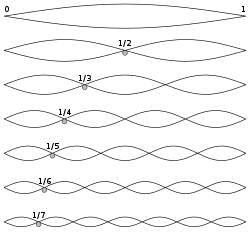Acoustics is the interdisciplinary science that deals with the study of all mechanical waves in gases, liquids, and solids including vibration, sound, ultrasound and infrasound. A scientist who works in the field of acoustics is an acoustician while someone working in the field of acoustics technology may be called an acoustical or audio engineer. The application of acoustics can be seen in almost all aspects of modern society with the most obvious being the audio and noise control industries.
Hearing is one of the most crucial means of survival in the animal world, and speech is one of the most distinctive characteristics of human development and culture. So it is no surprise that the science of acoustics spreads across so many facets of our society—music, medicine, architecture, industrial production, warfare and more. Art, craft, science and technology have provoked one another to advance the whole, as in many other fields of knowledge. Lindsay's 'Wheel of Acoustics' is a well accepted overview of the various fields in acoustics.
The word "acoustic" is derived from the Greek word ἀκουστικός (akoustikos), meaning "of or for hearing, ready to hear" and that from ἀκουστός (akoustos), "heard, audible", which in turn derives from the verb ἀκούω (akouo), "I hear"
The Latin synonym is "sonic", after which the term sonics used to be a synonym for acoustics and later a branch of acoustics After acousticians had extended their studies to frequencies above and below the audible range, it became conventional to identify these frequency ranges as "ultrasonic" and "infrasonic" respectively, while letting the word "acoustic" refer to the entire frequency range without limit.
History of acoustics
The fundamental acoustical process
Hearing is one of the most crucial means of survival in the animal world, and speech is one of the most distinctive characteristics of human development and culture. So it is no surprise that the science of acoustics spreads across so many facets of our society—music, medicine, architecture, industrial production, warfare and more. Art, craft, science and technology have provoked one another to advance the whole, as in many other fields of knowledge. Lindsay's 'Wheel of Acoustics' is a well accepted overview of the various fields in acoustics.
The word "acoustic" is derived from the Greek word ἀκουστικός (akoustikos), meaning "of or for hearing, ready to hear" and that from ἀκουστός (akoustos), "heard, audible", which in turn derives from the verb ἀκούω (akouo), "I hear"
The Latin synonym is "sonic", after which the term sonics used to be a synonym for acoustics and later a branch of acoustics After acousticians had extended their studies to frequencies above and below the audible range, it became conventional to identify these frequency ranges as "ultrasonic" and "infrasonic" respectively, while letting the word "acoustic" refer to the entire frequency range without limit.


